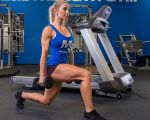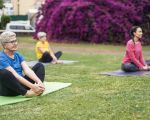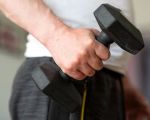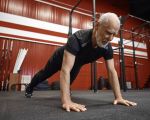Best Gym Exercises for Core Stability: Strengthen Your Core and Improve Posture
- Why Core Stability Matters
- The Benefits of Core Stability Exercises
- Best Gym Exercises for Core Stability
- How to Choose the Right Core Exercise for You
Core stability is the foundation of all movement, yet it is often overlooked in many workout routines. The core includes not only the abdominal muscles but also the muscles around your pelvis, lower back, and hips. These muscles are responsible for providing balance and stability during all activities, from simple tasks like standing to complex movements in sports or the gym. Improving core stability can prevent injuries, improve posture, and enhance overall physical performance. It’s an essential aspect of fitness that everyone should prioritize in their workout routines.
Incorporating core stability exercises into your fitness plan has numerous benefits. First, a strong core helps improve posture by aligning your spine and reducing strain on your back. Secondly, it enhances your balance and coordination, which is essential for activities like running, lifting weights, or even just walking. Third, core stability exercises can help prevent injuries by stabilizing your spine and reducing the risk of strains or sprains. Regularly working on your core can also lead to better athletic performance, as many movements require a strong foundation from the core muscles.
1. Planks
The plank is one of the most effective and well-known core exercises. It primarily targets the rectus abdominis, obliques, and lower back, making it an excellent full-body workout. To perform a plank, start in a push-up position, ensuring that your body forms a straight line from head to heels. Keep your core tight and hold the position for as long as possible, aiming for at least 30 seconds. Over time, you can increase the duration as your strength improves.
2. Russian Twists
Russian twists are fantastic for improving rotational strength and stability, working the obliques and abdominal muscles. To perform this exercise, sit on the floor with your knees bent and your feet lifted slightly off the ground. Lean back slightly, keeping your back straight, and hold a weight or medicine ball in your hands. Twist your torso to the left and right, engaging your core as you move. This exercise is great for improving stability and strengthening the muscles responsible for twisting motions.
3. Dead Bugs
Dead bugs are an excellent exercise for building core stability while protecting your lower back. Begin by lying on your back with your arms extended towards the ceiling and your knees bent at 90 degrees. Slowly lower your right arm and left leg towards the floor, keeping your back pressed into the ground, and then return to the starting position. Repeat with the opposite arm and leg. This exercise challenges your core to maintain stability while moving your limbs.
4. Bird-Dog
The bird-dog exercise is a simple yet effective movement to improve core strength and stability, as well as enhance balance. Start by positioning yourself on your hands and knees with your hands under your shoulders and knees under your hips. Slowly extend your right arm and left leg, keeping your core engaged and your body stable. Hold the position briefly, then return to the starting position and switch sides. This exercise helps to stabilize your spine and pelvis while improving coordination.
5. Cable Woodchoppers
Cable woodchoppers are a dynamic exercise that targets the obliques and helps improve rotational power and stability. To perform this exercise, use a cable machine set at the highest point. Grab the handle with both hands and pull it diagonally across your body, twisting your torso as you do. Return to the starting position in a controlled manner and repeat. This exercise is great for developing rotational strength and building stability in your core muscles.
When choosing core stability exercises, consider your fitness level and any specific needs you may have. Some exercises, like planks and bird-dogs, are perfect for beginners because they focus on building basic stability. For more advanced individuals, exercises like cable woodchoppers and Russian twists can add variety and challenge to your routine. It’s also important to ensure that your core workout includes both static exercises (like planks) and dynamic movements (like Russian twists) to work the core from all angles. To get the most out of your core workouts, be consistent and progressively challenge yourself with variations or more difficult exercises.
If you’re looking for the best gym equipment or guidance to help with your core workouts, check out Fitness, where we offer a range of products and services tailored to building a stronger core and improving overall stability.








